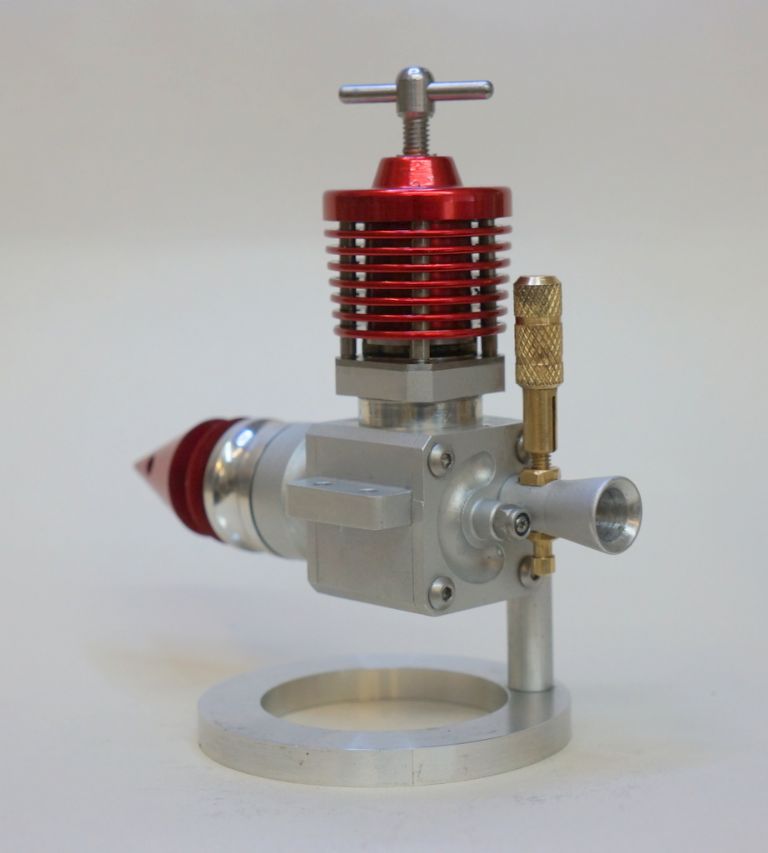Hello Keith,
Like you I felt the need to reread the old thread again and without going all over it again I remain unchanged in my thoughts as to seating the bearings – in a home made engine of this kind – though of course many commercial TBR engines have the same situation.
With regard to the same size bearings – the jury seems to be out on this over at the Barton site. No one has recalled the discussion I thought had taken place on there though of course that doesn't mean it wasn't. There is some mention of potential harmonics but nothing fact based and many pointing out that same size bearings are okay. I wish I could remember where I saw it but I can't and anyway at our level it doesn't seem to matter.
Why I prefer the larger rear bearing (which takes the radial loads) and a smaller front bearing which takes the axial ones is mainly due to the ease of ensuring the inner race at the front is firmly nipped between the step on the shaft and the prop driver collet when the prop is tightened. That it may have some potential increase in performance (over same size bearings) has never been in my thoughts and as we've all been there before theres no point in repetition of discussion I guess.
Heat build up in the cylinder is to be expected on bench running and indeed inside a closely cowled 'bonnet'. Running in will soon produce heat, so fast, but not leaned out, short runs are better than long rich ones not allowing the heat to build to rapidly and allowing the engine to cool before repeating.
A fine pitch prop say 4" or less will allow the engine to 'run' without placing too much load on it – 6" pitch or more is not ideal as even with a smaller diameter the load is more than what is ideal at the early stage of running.
A cast piston in a cast liner is a good combination material wise (though not the best) but even the best of initial compression will ease as the surfaces wear quite quickly on those early runs with the oily black exhaust residue giving clear indication. If the parts are unhardened then the best combination is that recommended by that long ceased engine 'guru' George Aldrich – a Meehanite or (continuous cast) piston in free cutting steel making the contra piston from the same cast.
With regard to seals – I do use sealed bearings if open ones aren't available but always remove the seals before fitting. If that front bearing becomes gummed with castor it's much easier to free with a drop of cellulose behind the prop driver – difficult with a seal fitted.
All this engine talk is whetting my appetite but fortunately(?) the workshop isn't up and running as we speak. I do have the need for a good 3.5cc for a team race model – a bored out Viper might just be worth considering.
All the best for that next project 
Tug
Edited By Ramon Wilson on 04/09/2023 16:08:59
 Ramon Wilson.
Ramon Wilson.








